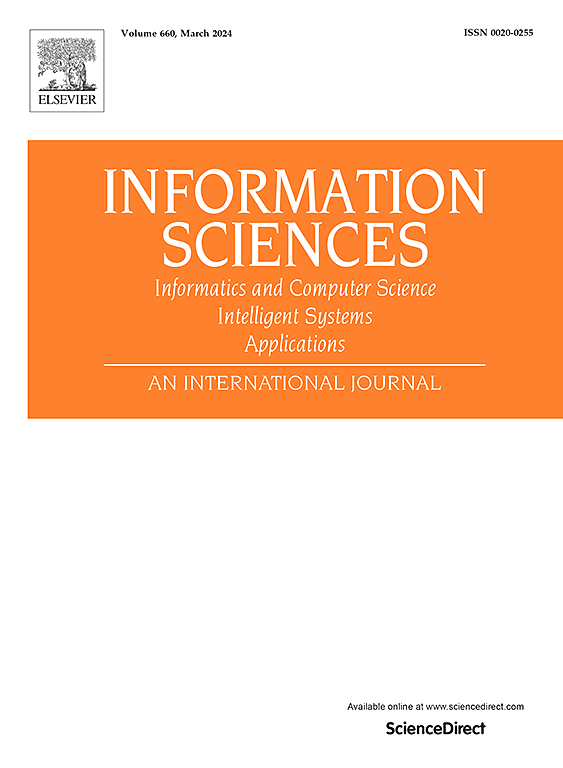NodeHGAE: Node-oriented heterogeneous graph autoencoder
IF 6.8
1区 计算机科学
0 COMPUTER SCIENCE, INFORMATION SYSTEMS
引用次数: 0
Abstract
Heterogeneous graph autoencoder (HGAE), as an unsupervised learning approach, aims to encode nodes and edges of heterogeneous graphs into low-dimensional vector representations, and simultaneously reconstruct the original graph structure from node representations. Existing heterogeneous graph encoders typically follow the metapath paradigm, encoding different semantic information and then employing decoders to reconstruct nodes attributes and edges information. However, the interaction between different semantic structures is underestimated which may lead to loss of semantic information. Moreover, employing graph-level unified attention mechanism to weigh the importance of different semantic structures of nodes is a suboptimal choice. Motivated by these challenges, a novel method named Node-oriented Heterogeneous Graph Autoencoder (NodeHGAE) is proposed. It first aggregates different semantic information based on node neighborhoods and utilizes the Chebyshev function to derive high-order neighborhood information of nodes. Then, low-rank matrix and parameter decoupling are proposed to assign node-specific attention and semantic information is integrated from different levels. Additionally, node-level and graph-level contrastive loss are proposed to redress the noise problem in the process of feature and topology coupling in HGAE. Experiments have shown that NodeHGAE outperforms state-of-the-art methods on four public heterogeneous graph datasets. The code of NodeHGAE can be found at Github.1
NodeHGAE:面向节点的异构图自编码器
异构图自编码器(HGAE)作为一种无监督学习方法,旨在将异构图的节点和边缘编码为低维向量表示,同时从节点表示重构原始图结构。现有的异构图编码器通常遵循元路径范式,对不同的语义信息进行编码,然后使用解码器重构节点属性和边缘信息。然而,不同语义结构之间的相互作用被低估,这可能导致语义信息的丢失。此外,采用图级统一注意机制来衡量节点不同语义结构的重要性是一种次优选择。针对这些挑战,提出了一种新的方法——面向节点的异构图自编码器(NodeHGAE)。首先基于节点邻域聚合不同的语义信息,利用Chebyshev函数推导节点的高阶邻域信息;然后,提出了低秩矩阵和参数解耦来分配节点特定的关注,并从不同层次集成语义信息。此外,提出了节点级和图级对比损失,以解决HGAE中特征与拓扑耦合过程中的噪声问题。实验表明,NodeHGAE在四个公共异构图数据集上优于最先进的方法。NodeHGAE的代码可以在Github.1找到
本文章由计算机程序翻译,如有差异,请以英文原文为准。
求助全文
约1分钟内获得全文
求助全文
来源期刊

Information Sciences
工程技术-计算机:信息系统
CiteScore
14.00
自引率
17.30%
发文量
1322
审稿时长
10.4 months
期刊介绍:
Informatics and Computer Science Intelligent Systems Applications is an esteemed international journal that focuses on publishing original and creative research findings in the field of information sciences. We also feature a limited number of timely tutorial and surveying contributions.
Our journal aims to cater to a diverse audience, including researchers, developers, managers, strategic planners, graduate students, and anyone interested in staying up-to-date with cutting-edge research in information science, knowledge engineering, and intelligent systems. While readers are expected to share a common interest in information science, they come from varying backgrounds such as engineering, mathematics, statistics, physics, computer science, cell biology, molecular biology, management science, cognitive science, neurobiology, behavioral sciences, and biochemistry.
 求助内容:
求助内容: 应助结果提醒方式:
应助结果提醒方式:


